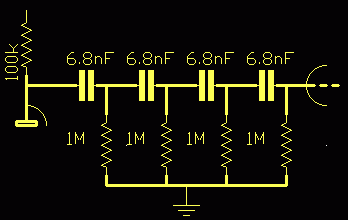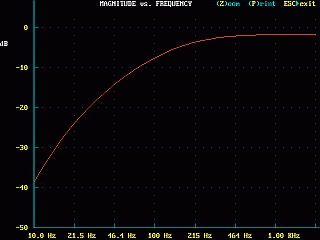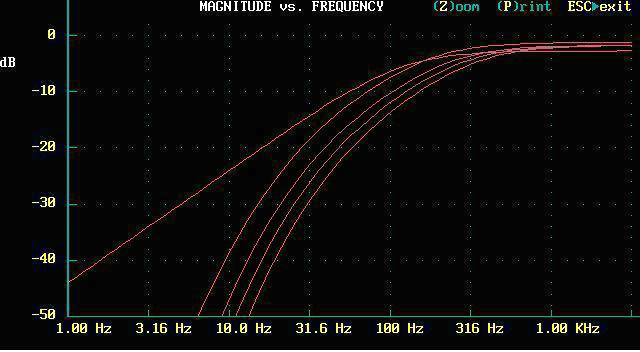Some rigs suffer from speaker cone “pumping” in sympathy with the tremolo LFO frequency.
All the direct-modulation systems suffer from this to some degree or other, and only the opto-coupled LDR seems free of it.
The problem is that the low frequency signal from the oscillator finds its way into the signal path and is amplified just like any bass signal.
The result is that for deep tremolo depths and slow speeds the cones can “pump” or motor violently forward and back.
This isn't good for the speakers or your sound for several reasons we won't dwell on.
Maton Series 10
Here is a fragment of an early Maton Series 10 tremolo mixer prone to producing pumping. Maton didn't have this on their own, and many of the arrangements used prior to LDR opto's had this problem, including the Fender DeLuxe so it's no great shame.
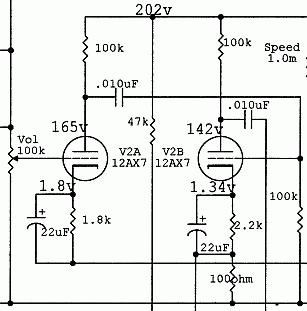
Source: Richard deWinter
In this case the tremolo is applied to the cathode of V2a. Because this wobbles the DC conditions of the first preamp stage it turns up on the anode and is coupled to the next stage via the 0.01uF and 100k grid leak on V2b.
This is what the original 0.01uF/100k coupling looks like;
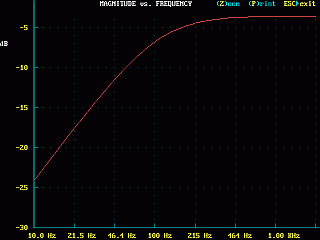
Only -20dB at 10Hz
It has an insertion loss of about -4dB (mainly due to the low 100k grid leak), is down -8dB on the open-E, and -24db at 10Hz trem frequency max.
In fact the ratio between the low-E and the top trem signal is reduced to only -24-8 = -16dB.
The corner frequency is;
Fc = 1 / (2 π C R) Hz
[or ω = 1 / C R Radian/sec]
As it happens C = 0.01e-6 by R = 100e3 reduces to simply 1e-3, so;
Fc = 1/(2 π 1e-3) = 159Hz
You can confirm this graphically by continuing the two straight sections until they intersect, “squaring the knee”. Where they meet should be at 159Hz. Save the graphic and try it.
So at the bottom open-E at ~80Hz this is already producing a loss of -8dB, less than half.
Against this it is cutting down the tremolo oscillator to 1/8th or -24dB. But this starts out as a very large signal compared to our guitar signal.
Moody GA40 filter
New: 21/12/10
This amp has what can only be called a very odd network following the tremolo modulation stage. The obvious intent is to filter the LFO out of the signal, but given the electronic engineering standard of Moody amps I have to wonder if this was original or later modding.
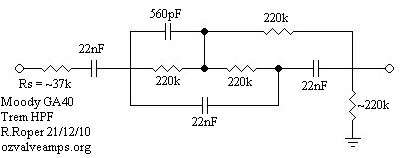
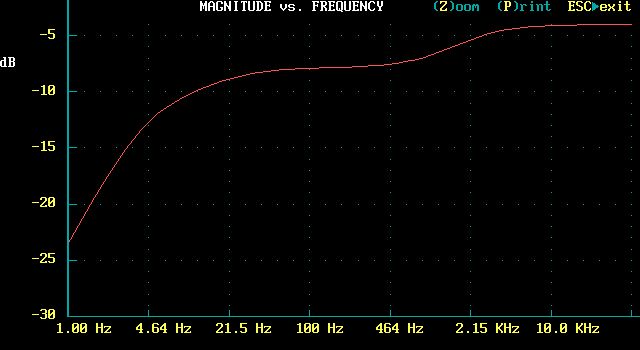
Only a poor -10dB at 10Hz
Can we do better than this?
